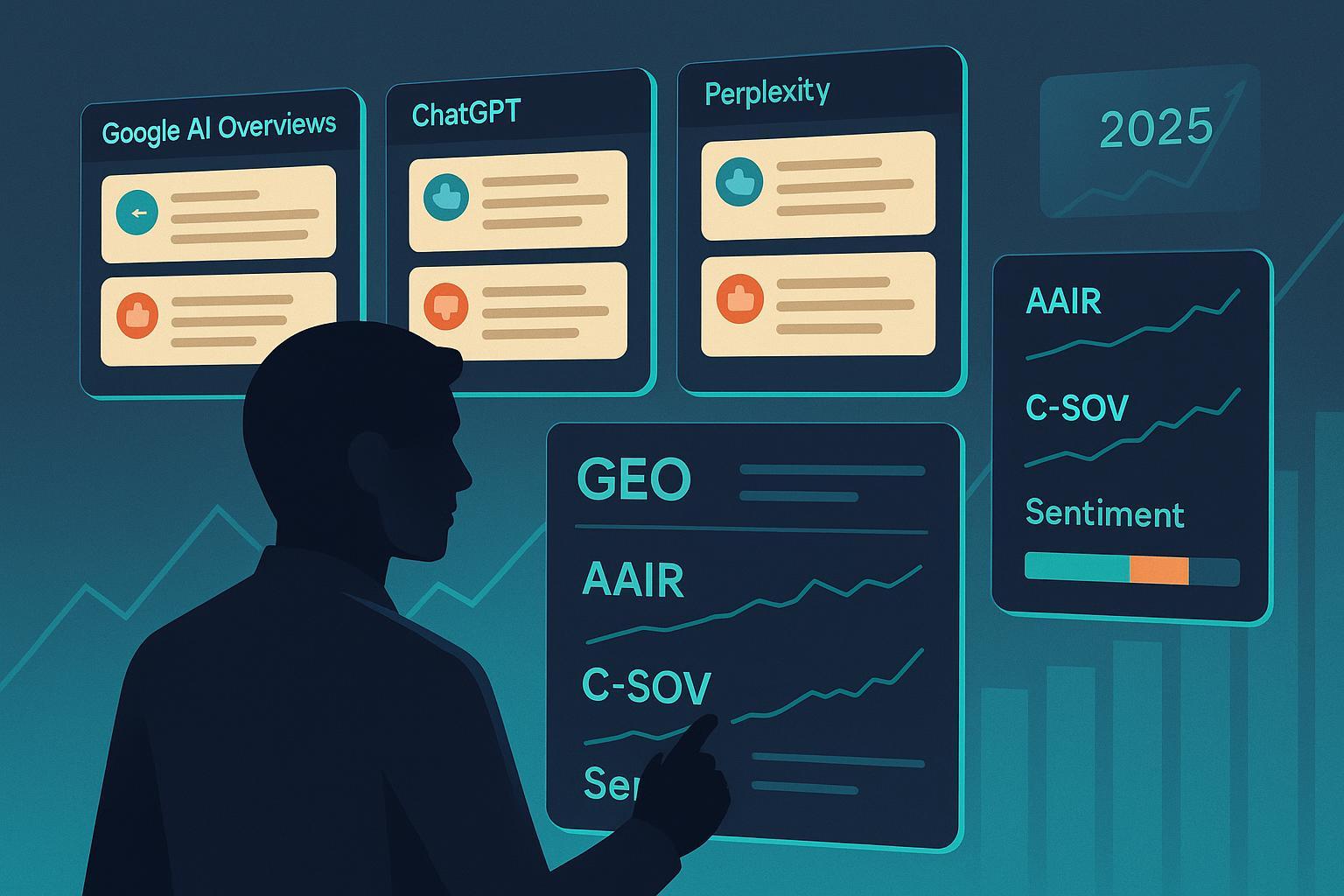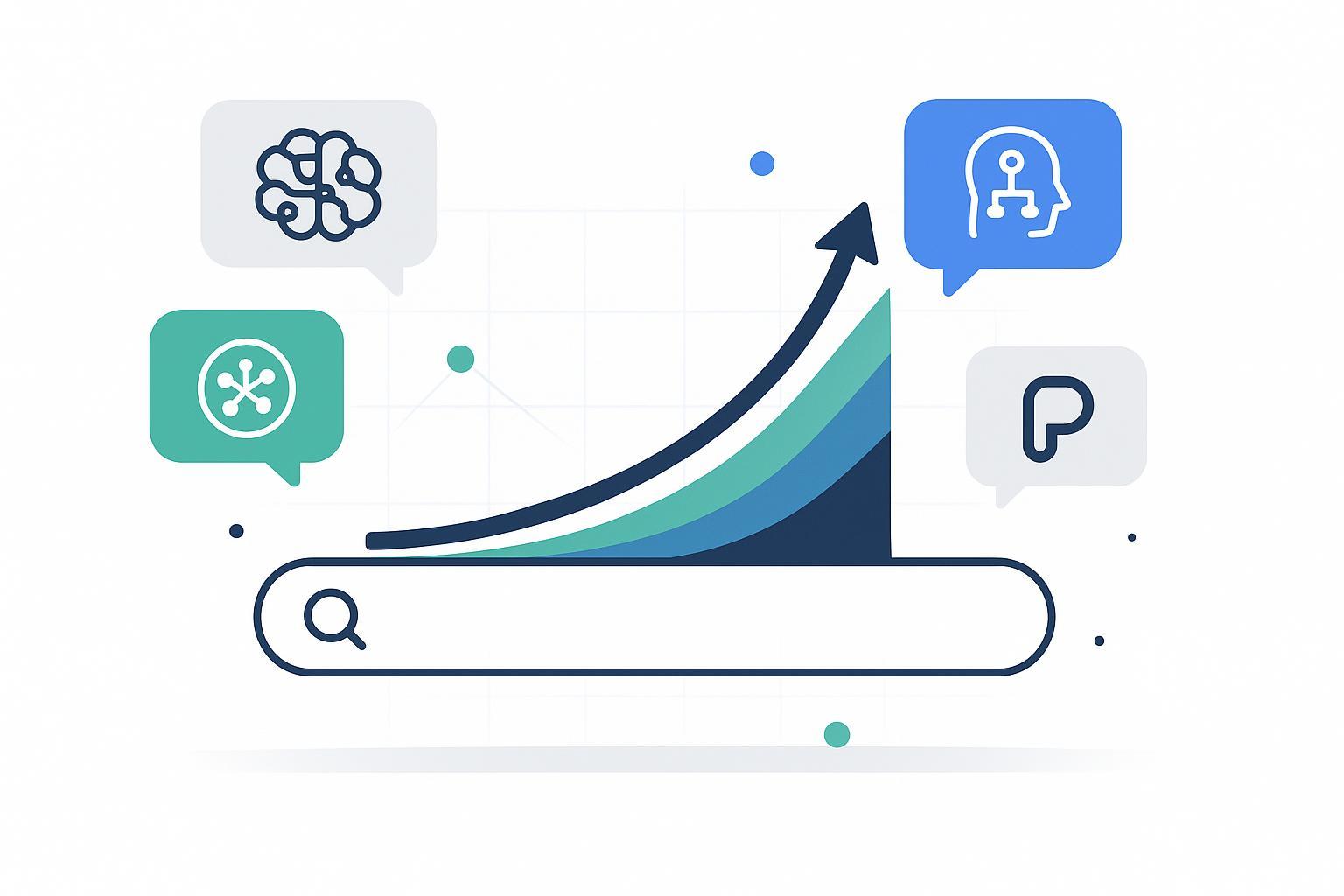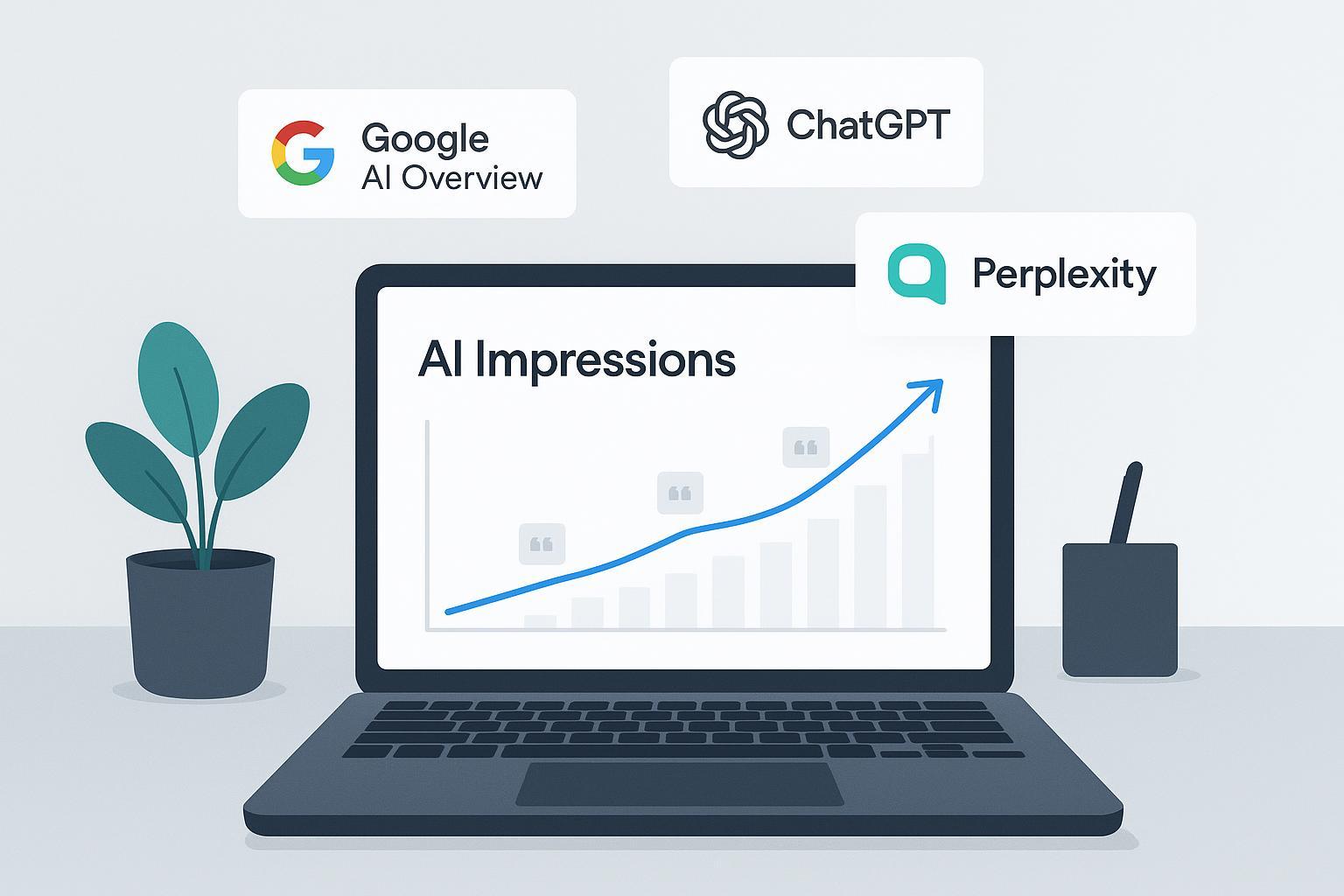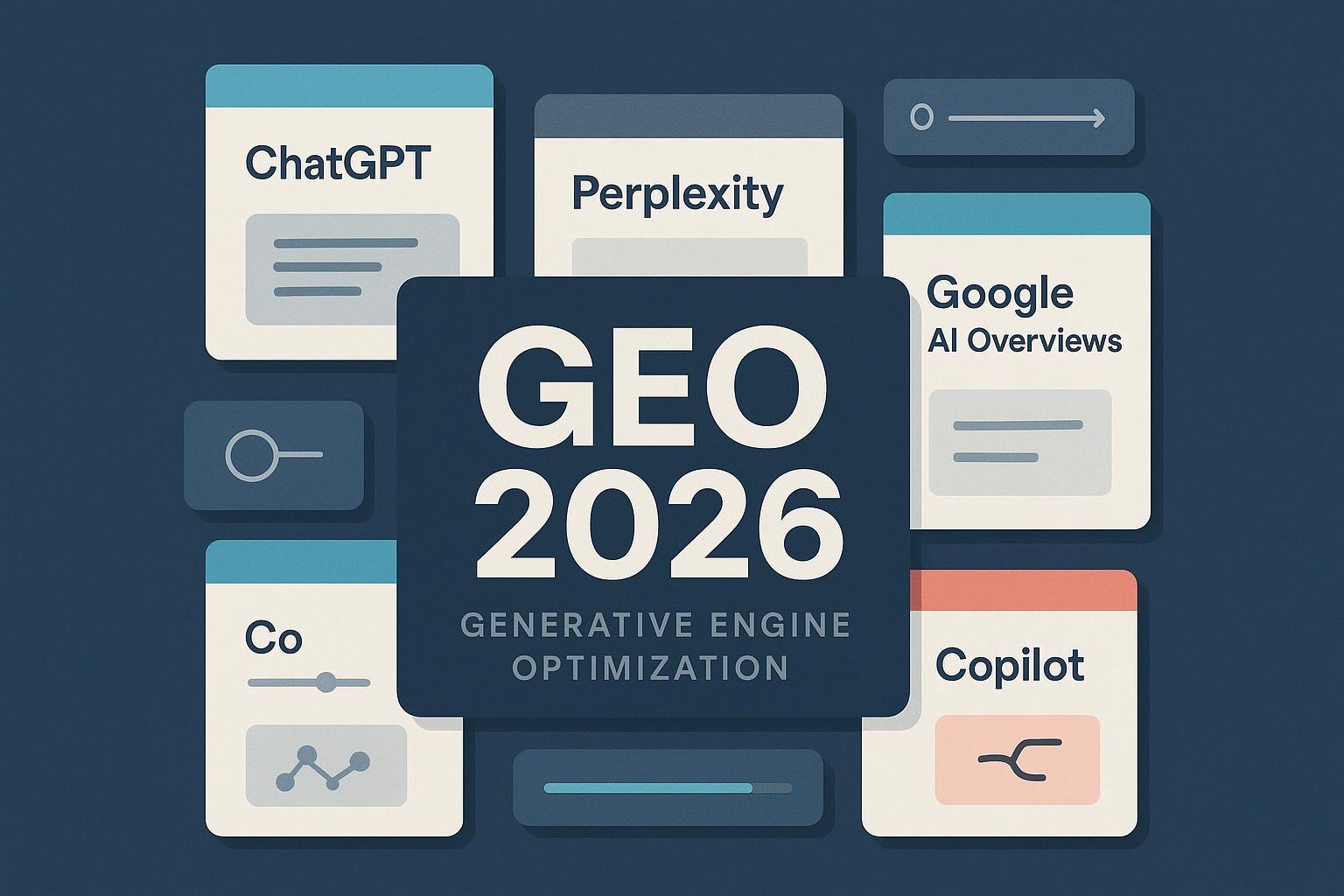The Rise of GEO Specialists in 2025: Digital Marketing Career Trends
Discover why GEO specialists are the hottest digital marketing role in 2025. Learn key skills, hiring signals, and how to join this booming field now!


Updated on 2025-10-12
Generative engines are changing how people discover answers—and how brands get discovered. In 2025, more user journeys start and end inside AI-generated summaries, where inclusion and citation matter as much as traditional rankings. Multiple 2024–2025 sources now define Generative Engine Optimization (GEO) as distinct from classic SEO: optimizing entities and content so AI systems retrieve, ground, and cite them in answers. See the definition from Search Engine Land’s 2024 explainer and the current entry on Wikipedia’s 2025 page for Generative engine optimization.
What a GEO specialist does—and why this role emerged in 2025
A GEO specialist is a hybrid practitioner who blends semantic/technical SEO, content strategy, digital PR, and AI retrieval literacy. The objective isn’t just blue‑link rankings; it’s consistent, accurate inclusion and citation inside AI answers across Google AI Overviews, ChatGPT, Perplexity, Gemini, Claude, and Bing Copilot.
- Distinct from SEO: SEO targets SERP positions and click‑through. GEO targets answer inclusion and citation likelihood.
- Platform behavior, in brief:
- Google AI Overviews: Google notes that AI features are grounded in sources and provides guidance for site owners (Google Developers, updated May 2025). See Google Developers: AI features and your website (2025).
- ChatGPT, Perplexity, Gemini/Claude, Copilot: These systems can display citations when grounded via search/browsing tools. Exact behaviors vary by product and evolve frequently. Treat observations as non‑guaranteed and monitor empirically.
Why now: As generative answers normalized through 2024–2025, brands needed specialists who can influence how AI summarizes their expertise, not only how search engines rank their pages. GEO specialists operationalize this shift.
The 2025 GEO competency profile
GEO is a team sport, but a dedicated specialist owns the loop from prompt discovery to monitoring and iteration. Core competencies include:
- AI search literacy
- Understand how different engines fetch, ground, and cite. Know when answers draw from web results, internal knowledge, or model priors.
- Track variations in citation UI and source diversity across engines; document changes over time.
- Semantic SEO and content architecture
- Design entity‑first content with clear topical clusters, semantic HTML, and schema. Prioritize “fact density” (claims supported by references), FAQ sections, and scannable snippets that are easy to summarize accurately.
- Maintain internal linking that reinforces topical authority and helps engines map concepts.
- Citation engineering and digital PR
- Earn high‑signal mentions on authoritative, relevant domains and communities. Tactics include data‑led content, expert contributions, and community engagement that earns references. For practical community playbooks, see Driving AI Search Citations Through Reddit Communities.
- Data and experimentation
- Build prompt clusters by intent (problem, comparison, transactional, support). Test content changes, structured data variants, and snippet patterns; diff answers and track inclusion deltas.
- Create a release‑aligned change log to connect interventions to KPI movement.
- Brand safety and E‑E‑A‑T governance
- Institute provenance standards: cite primary sources, add last‑updated stamps, and verify claims. Periodically refresh stale pages. In sensitive categories, coordinate with Legal/Comms to prevent hallucinated or outdated claims from propagating in AI answers.
Measurement first: The GEO KPI starter pack
To avoid “strategy theater,” GEO work must be measured. A 2025 consensus set of practitioner metrics focuses on visibility, share, and sentiment within AI answers. Industry commentary in 2025 highlights how teams are formalizing these metrics—see Search Engine Land’s 2025 guide to measuring AI search visibility.
- AI Answer Inclusion Rate (AAIR): appearances / total tracked prompts × 100.
- Citation Share of Voice (C‑SOV): your citations / total citations in answer blocks × 100.
- Sentiment‑Weighted Visibility (SWV): AAIR adjusted by sentiment polarity/strength across answers.
- Prompt Cluster Coverage (PCC): % of priority intents where you achieve inclusion.
Execution tips
- Track by engine and by intent cluster; engines behave differently.
- Capture periodic snapshots of answers and citations for auditability.
- Establish a weekly review cadence and a monthly executive roll‑up.
For cross‑industry workflows that apply these metrics, explore 2025 AI Search Strategy Case Studies: Cross‑Industry Best Practices.
Hiring signals in 2025: Titles, responsibilities, and evidence
Formal “GEO Specialist” titles are emerging but not yet ubiquitous. However, companies are posting roles that explicitly reference GEO/AEO responsibilities:
- Adobe (2025): A Product Manager role referencing Generative Engine Optimization responsibilities—strategy, data use, and performance analysis. See Adobe Careers — Product Manager, Adobe.com, Generative Engine Optimization (2025).
- Hawksford (2025): A manager role spanning SEO/GEO/AEO to improve visibility in AI surfaces. See Hawksford — SEO / GEO / AEO Manager (2025).
Hiring managers should prioritize portfolios over certificates: before/after answer screenshots, inclusion‑rate deltas, and citation logs beat theory. Adjacent titles you may see: AI Search Strategist, AEO Lead, Answer Engine Optimization Manager, LLM SEO Strategist.
Practical example: Setting your AAIR baseline across engines
First, choose a monitoring approach that can track answers, citations, and sentiment by engine and prompt cluster. Geneo can be used to baseline AAIR, C‑SOV, SWV, and PCC across ChatGPT, Perplexity, and AI Overviews. Disclosure: Geneo is our product.
A replicable workflow
- Build your prompt set: 100–300 prompts across four intent clusters (problem/comparison/transactional/support). Include branded and unbranded variants.
- Segment by engine: Track each prompt separately in Google AI Overviews, ChatGPT (with browsing where applicable), Perplexity, Gemini/Claude, and Copilot.
- Capture inclusion and citations: Record whether your domain/brand appears in the answer and which sources are cited. Store screenshots or permalinks for audit.
- Score sentiment: Apply a simple positive/neutral/negative model to the answer text; map to SWV.
- Compute metrics weekly: AAIR, C‑SOV, SWV, and PCC by engine and cluster; annotate changes tied to releases.
- Review fidelity: Are your key claims summarized accurately? If not, enrich fact density, tighten headings, and add supporting citations on your pages.
Want to see what a prompt‑level report can look like? Here’s an example query report: AI answer and citation analysis — beachfront cabins Belize (sample).
A 90‑day GEO pilot plan (Weeks 1–12)
Weeks 1–2: Baseline and inventory
- Instrument dashboards by engine and cluster; establish AAIR, C‑SOV, SWV, PCC.
- Inventory cornerstone pages; list gaps and outdated claims; capture current citations.
Weeks 3–6: Ship entity‑ and schema‑forward improvements
- Enrich fact density: add concise claims with references; expand FAQs and comparison tables.
- Improve internal linking and topical clusters; standardize schema (FAQ, HowTo, Product/Service, Organization).
- Pursue 3–5 high‑signal earned mentions (expert quotes, data studies, community contributions) to strengthen citation likelihood.
Weeks 7–10: Iterate and test
- Adjust snippets, headings, and schema variants; refine prompt clusters.
- Diff answers pre/post changes and measure inclusion deltas per engine.
Weeks 11–12: Package and decide
- Executive roll‑up: KPI movement, accuracy/fidelity notes, and risk log.
- Decide: formalize a GEO specialist role or continue with an upskilled cross‑functional model.
Governance: Keep accuracy and trust non‑negotiable
- Provenance: Prefer primary sources and authoritative references; ensure visible last‑updated dates.
- Fact density: Summaries reward concise, verifiable claims; link supporting evidence on‑page.
- Change management: Maintain an annotated change log mapping releases to KPI shifts.
- Cross‑functional review: Pair the GEO specialist with Legal/Comms for sensitive claims and with Analytics to validate measurement.
Conclusion
GEO is no longer a buzzword—it's a measurable practice that complements SEO and PR. Teams that treat AI answer visibility as its own surface, with dedicated skills and metrics, will control more of the consideration journey in 2025. If you’re formalizing a GEO function, platforms like Geneo can support a monitoring‑first workflow while you build internal muscles and governance.
Change log
- 2025-10-12: Initial publication with GEO competencies, KPI formulas, hiring signals, and a 90‑day pilot plan.





